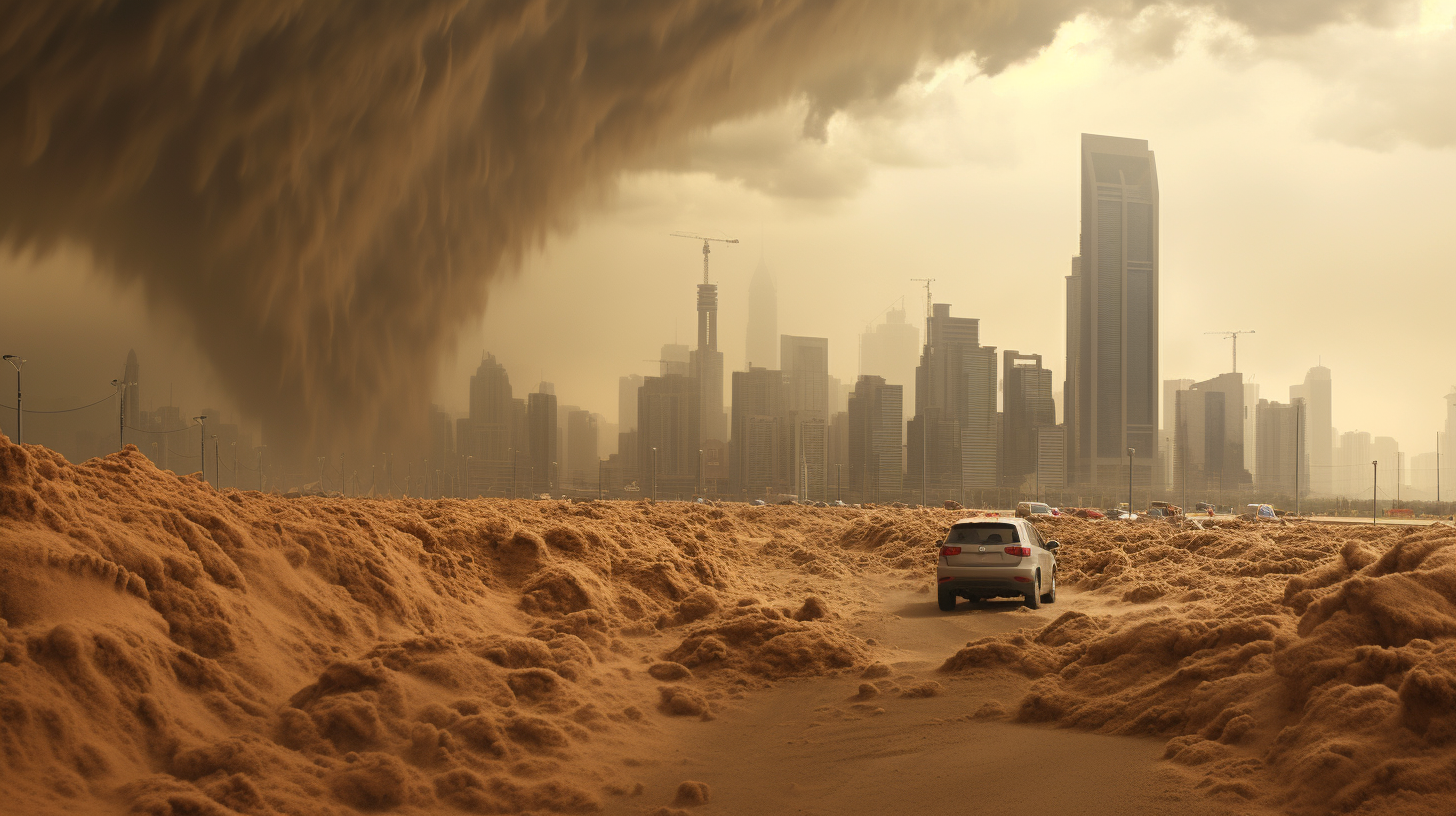Amidst the tumultuous dance of dust devils and the ever-stifling heat, an apocalyptic curtain rises upon the horizon. The Earth, once resplendent with diverse biomes, now coughs out sands that swallow entire skylines. Stand upon the precipice of reality and witness the relentless advance of new deserts, landscapes where once rivers babbled and forests stood tall.
In the cacophony of whirling dust, whole cities become vague outlines—spectres in the gritty fog of our own making. The ceaseless assault of particulate matter etches windows and erodes the edifices of civilization. What remains is a muffled world, silenced by the granular shroud of a proliferating desert.
‘The Brown Tide’, as some have ominously termed it, isn’t just a regional plight but a global spectacle of desolation—borne from humanity’s environmental apathy. Our previous discourses on the Contours of Drought and The Fading Beneath explored the vanishing points of water and soil. Now, we converge upon another catastrophic nexus: the desertification threatening to irreversibly transfigure the Earth’s verdant mantle.
Once fertile fields now lie fallow under layers of silt and sand. Agriculturists mutter in despair, facing barren expanses where hope refuses to germinate. The livelihoods based on sowing and reaping are swallowed up—perhaps forever. And it’s not just the sustenance of grains that vanishes; the economic sandstorm buffets markets, stirring up the particles of poverty and hunger.
Experts articulate this as an ‘environmental domino effect’—a cascade of calamities spawning from our relentless exploitation of natural resources. Deforestation, overgrazing, and poor irrigation practices induce the slow creep of deserts. Political shortsightedness and environmentally blind policies only expedite this gruesome march. And amidst the turbulent dust, whispers of conflict begin to roar as battlegrounds form over the ever-scant water sources.
The silence of the vanished wildlife echoes the loudest. Where songbirds once orchestrated the dawn chorus, now the hiss of shifting sands plays a mournful requiem. Biodiversity shrinks in the face of aridity, and the ecosystem’s intricate tapestry frays at every edge.
But is there a beacon of insight amid the sand-obscured daylight? ‘Satellites of Desolation’—next-generation observation technology—track these burgeoning wastelands. Scientists use this data to map the cancerous spread of desert terrain. Yet in a world where action lags far behind insight, the question beckons: will we manipulate this knowledge for change or simply observe our fall?
Object lessons of the past loom large; the Dust Bowl of the 1930s was once chronicled as a monumental lesson. Yet, we stand amidst a global Dust Bowl, unperturbed in our paths, bound to a destiny of climate-induced exile. We must examine whether this is the inheritance we desire to bequeath to future sentience.
In the final analysis, the rise of the new deserts is not an anomaly—it’s a testament. An indelible signature of a species’ folly. It’s a narrative that needs no fabricating or over-dramatizing. It’s the prose of our planet—stark, unembellished, and devastating.
While hopes of reclamation flicker dimly, the stark reality endures; our dystopian present resounds with the hollow sound of sand grains pattering against the last bastions of a world that could have been. The skylines swallowed, shadows lengthen, and the clock ticks toward an austere future driven inexorably onwards by the advance of new deserts.
